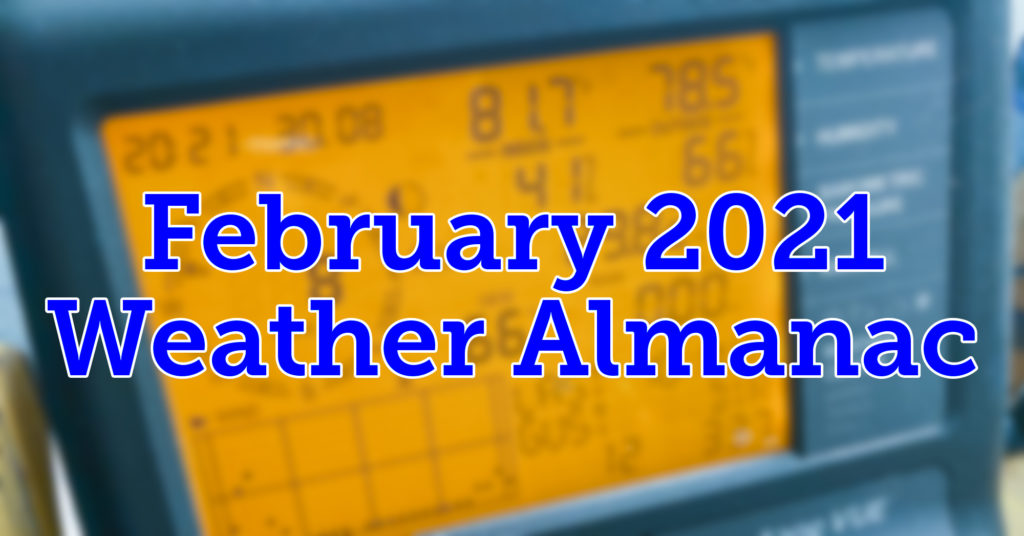
With warm wishes and high hopes for a happy New Year 2024
Exploring the Nonprofit IT Landscape: Insights and Reflections
Dispatches from ongoing projects
Warm wishes and high hopes for a happy New Year 2024

With warm wishes and high hopes for a happy New Year 2024
A little-known PaperCut feature on translating and transforming card formats. Perfect if you’ve just built or rebuilt your PaperCut infrastructure
As part of a recent IT upgrade, I rebuilt our entire printing infrastructure. There were some issues with how it was previously built, so this was a good time to start from scratch. One of the issues was our PaperCut MF installation, of which I’ve documented our challenges on this blog this year.
We use the badge scanning feature of PaperCut on our two copiers for secure print release and accounting purposes. (It also helps me make the case to those who want a personal printer that they don’t need one!) But I found that the badge format might produce a different format than what you’re expecting.
The setting is buried in the Config Editor (Options > Config Editor) as ext-device.card-no-converter. Here are the various values:
ascii-enc: Unpacks an ASCII-encoded card valuehex2dec: Converts hexadecimal (base-16) to decimal (base-10)dec2hex: Converts decimal to hexadecimaljavascript:[path] – At the path provided, uses a selected JavaScript code to convert a card’s read value into something else.Hopefully this will help someone working through a new PaperCut MF installation. I’ll write more later about some of the things I’ve learned from rebuilding out PaperCut.
A Minneapolis connection for the composer of the Independence Day soundtrack: John Philip Sousa
As we settle in to the Independence Day holiday, one of the things that happens is that we hear all of the John Philip Sousa marches on the playlist. While his most popular marches like The Stars and Stripes Forever, Semper Fidelis, or The Washington Post get played a lot, there’s an obscure march of his that has a uniquely Minneapolis connection.
In 1929, at the opening of his eponymous tower in downtown Minneapolis, the businessman Wilbur Burton Foshay (1881-1957) commissioned a march from Sousa, called the “Foshay Tower-Washington Memorial March.” At 447 or 607 feet tall, depending if you count an antenna on top of the building, the Foshay Tower was the tallest building in Minneapolis from its 1929 opening until the nearby IDS Center surpassed it 43 years later. The building was built not only because Foshay had money, but it was to pronounce to the world that Foshay had money. (Most things built in this time did that.)
The run of good luck for Foshay was short-lived: Six weeks after the opening of the building, Foshay’s company was thrown into receivership. The $20,000 check to Sousa bounced, and Sousa ordered that the march penned for this occasion was never to be played until the debt was settled up. In 1932, Foshay was convicted of running a pyramid scheme with shares of his own stock, and sentenced to 15 years in prison. Even in marching band circles, few knew of this mysterious 135th Sousa march.
It wasn’t until 1988 when a group of Minnesotans paid Foshay’s debt to the Sousa estate, allowing the Foshay Tower-Washington Memorial March to be played again.
As it’s been a few months now, I guess I should fill in my blog readers (all four of you) of some major news

As it’s been a few months now, I guess I should fill in my blog readers (all four of you) of some major news. In April, following a whirlwind recruitment process, I joined the staff at Meda, the Metropolitan Economic Development Association, in Minneapolis. That meant that I had to relocate from Phoenix, the up-until-now subject of this blog (and the only place I’ve called home) to Minneapolis, in somewhat great haste.
Over the next few weeks, I’ll highlight some of my adventures in my new city, share some observations and photography, and some thoughts as I can about being back in my element – IT within the nonprofit realm.
Want a rolling feed of National Weather Service warnings and watches for an area? Check out the IEMBot Monitor!

As we’re getting some actual weather in the Phoenix metro area this summer, I thought I’d share some of my online weather resources that I use to keep track of weather events.
My favorite site is the IEMBot Monitor. It’s run by the Iowa State University’s Iowa Environmental Mesonet program. But don’t worry: It’s not just for weather for Iowa! On the IEMBot Monitor, you can pick a National Weather Service local office and get a running list of weather watch or warning products issues for that particular area.
If you’re in Phoenix, you’ll want to select “[psrchat] Phoenix” from the Available Rooms picker and you’ll get a running list of the weather products
I should say at this point that this isn’t a substitute for getting severe weather alerts, just another tool to have in your tool belt.
Editor’s note: Due to ongoing systems and networking upgrades, the weather dashboard is temporarily offline.

The second COVID-19 vaccine knocked me out for a couple of days, so while I was recuperating from that, I created a Grafana dashboard with data from my weather station. The station is perched atop a building in midtown Phoenix. The dashboard is still quite a work in progress, but I’m pleased thus far with how it’s coming along.
For those who aren’t in the IT world, Grafana is a software platform that creates visual dashboards from various sources, including time series databases (TSDBs). TSDBs work by collating discrete metrics over time, and they’re usually found in the world of information technology. Instead of network I/O or CPU usage, the principle works for weather statistics: At this time, it was this temperature or the wind speed was that.
Continue reading “Behind the Weather Dashboard”With February 2021 now in the books, it’s time to rewind on the past twenty-eight days to see what weather we had in midtown Phoenix.

With February 2021 now in the books, it’s time to rewind on the past twenty-eight days to see what weather we had in midtown Phoenix. From the roof of a tower in Midtown Phoenix, here are the weather statistics from a dry and average month:
Please note that these data are not the official Phoenix weather statistics. The official Phoenix weather is taken at Phoenix Sky Harbor International Airport by the Phoenix office of the National Weather Service.
For all the latest weather from Midtown Phoenix, visit midtownweather.com.
With August 2020 in the books, here’s a snapshot of the month in weather from a weather station perched in midtown Phoenix.

As many of you may know, I maintain (in conjunction with Tapestry on Central) a weather station on the rooftop of one of our buildings. Since the books have closed on August, here’s a look at the August 2020 weather statistics:
Please note that these data are not the official Phoenix weather statistics. The official Phoenix weather is taken at Phoenix Sky Harbor International Airport by the Phoenix office of the National Weather Service.
For all the latest weather from Midtown Phoenix, visit midtownweather.com.
The closure of north-central Phoenix’s Metrocenter was announced. Some final thoughts on what was and what might be with the space

The big Phoenix news story over the past weekend is that the closure was announced of Metrocenter (1973-2020), the struggling shopping center in north-central Phoenix. The mall will close at the end of June after 47 years of operation.
Although this news is not surprising to hear, it is still a bit of a shock to hear the finality of it. The mall opened in 1973 with a record-setting five anchor store positions and 1.4 million square feet of retail space on two floors. For those who came of age in Phoenix in the 70s, 80s, and 90s, it was the place to see and be seen. It reached new appreciation in the 1980s when Metrocenter stood in for a mall in southern California in the 1989 science fiction film, Bill and Ted’s Excellent Adventure.
The Downtown Phoenix Podcast returns in 2020 to capture our community’s stories from this time of uncertainty surrounding COVID-19.
 Six years ago, I did a silly little podcast thing called The Downtown Phoenix Podcast. The only series was an eight-episode run that tried to capture some of the area’s history and stories. We talked about the renaissance of Hance Park, explored ways to get involved in central-city advocacy, and brought new voices to the table (one of whom is now an Arizona state legislator!).
Six years ago, I did a silly little podcast thing called The Downtown Phoenix Podcast. The only series was an eight-episode run that tried to capture some of the area’s history and stories. We talked about the renaissance of Hance Park, explored ways to get involved in central-city advocacy, and brought new voices to the table (one of whom is now an Arizona state legislator!).
Since 2014, I’ve frequently wanted to bring it back. I am definitely biased, I know, but it was an important project to bring these stories out of the shadows. But every time, there was always a hiccup that kept it from going.
In light of what’s happened to our community in this time of COVID-19 and social distancing, it’s certainly no understatement that things have fundamentally changed. That’s why I am going to bring back The Downtown Phoenix Podcast: to capture our stories from this time. It’s part podcast, but part collection of oral history.
This is going to be a team effort, however. Unlike the 2014 run of the Podcast, this isn’t going to be me talking all time time and offering my commentary essays on the relevant matters of the day. This is going to be about you. It’s going to be about our communities. What’s happening now? What are our fears for the moment? What are our hopes for the future?
If you or someone you know is a business owner, a community leader, an artist, or someone who’s life or livelihood has been upended in the past few weeks, get in touch with me. (Like the name of the Podcast suggests, the objective is to share stories from central-city Phoenix.) Email [email protected] or fill out this online form to get in touch.
Thank you for your consideration!